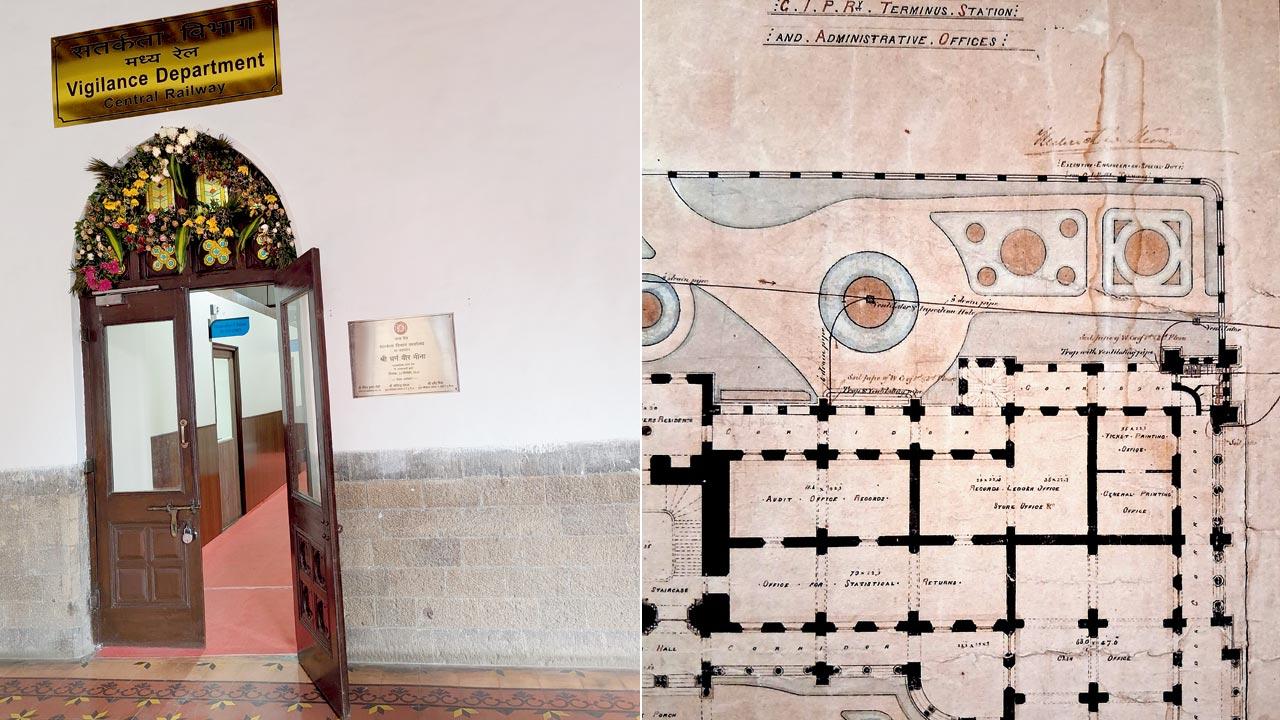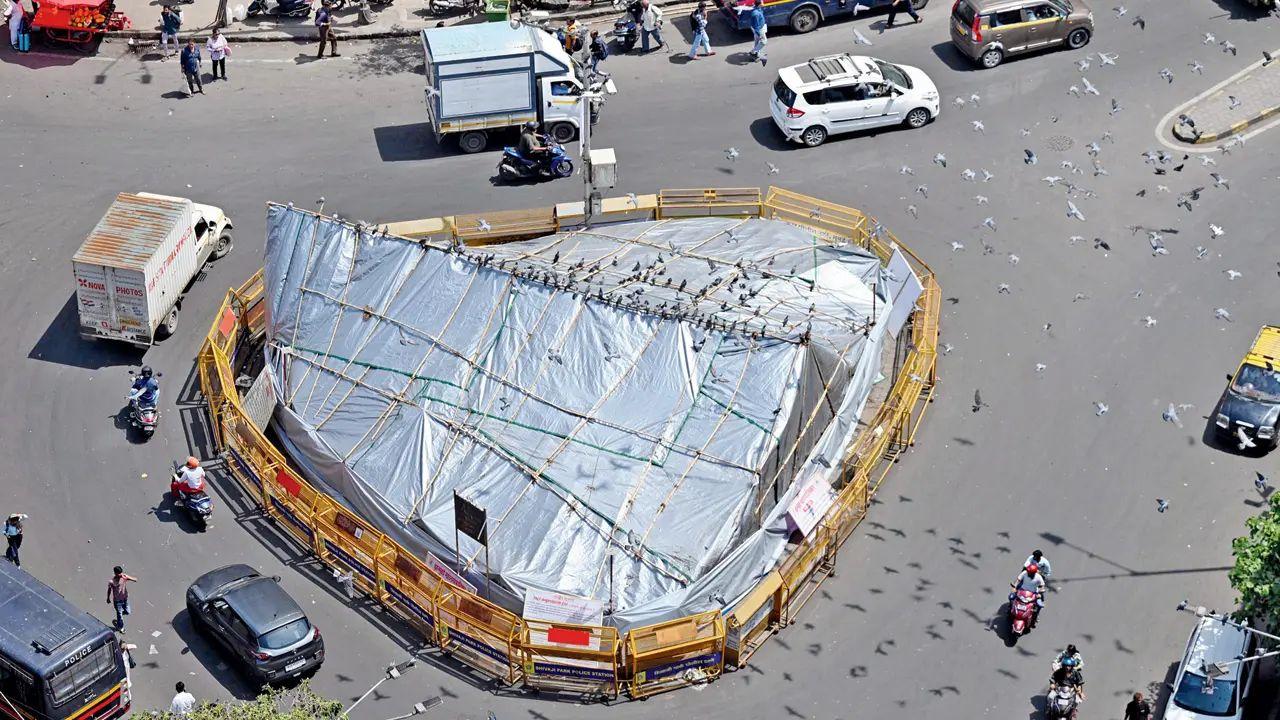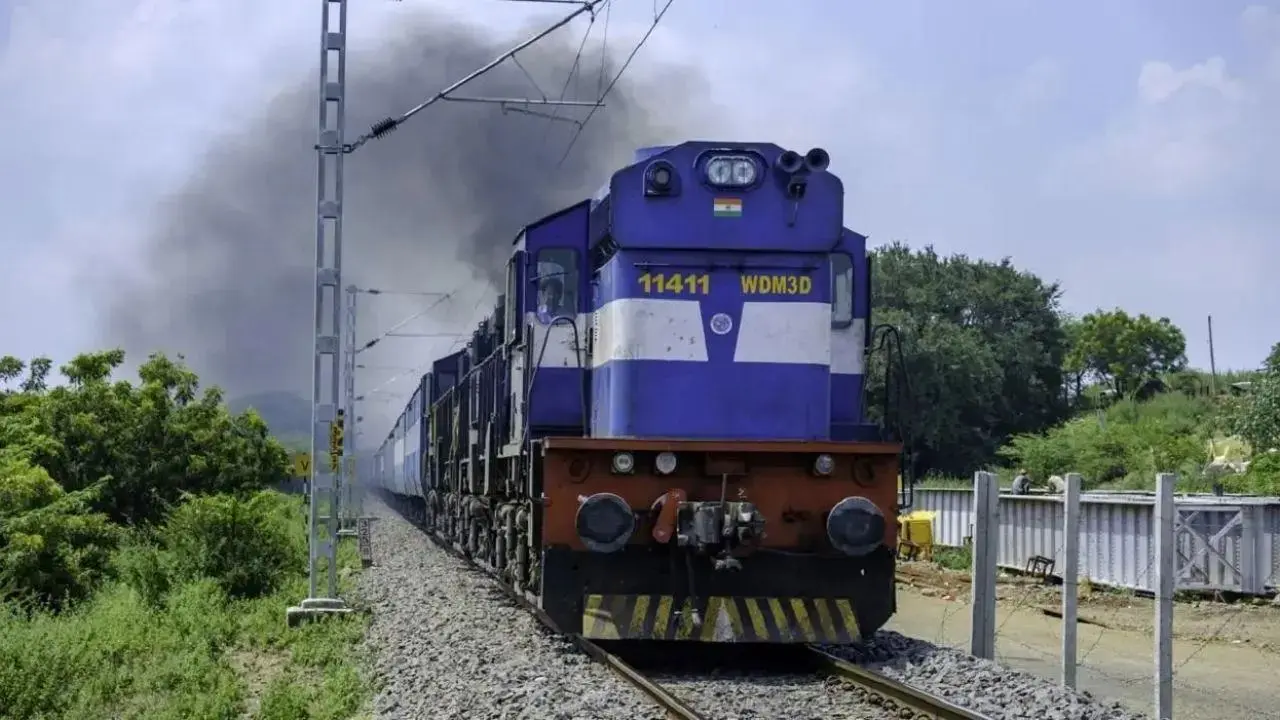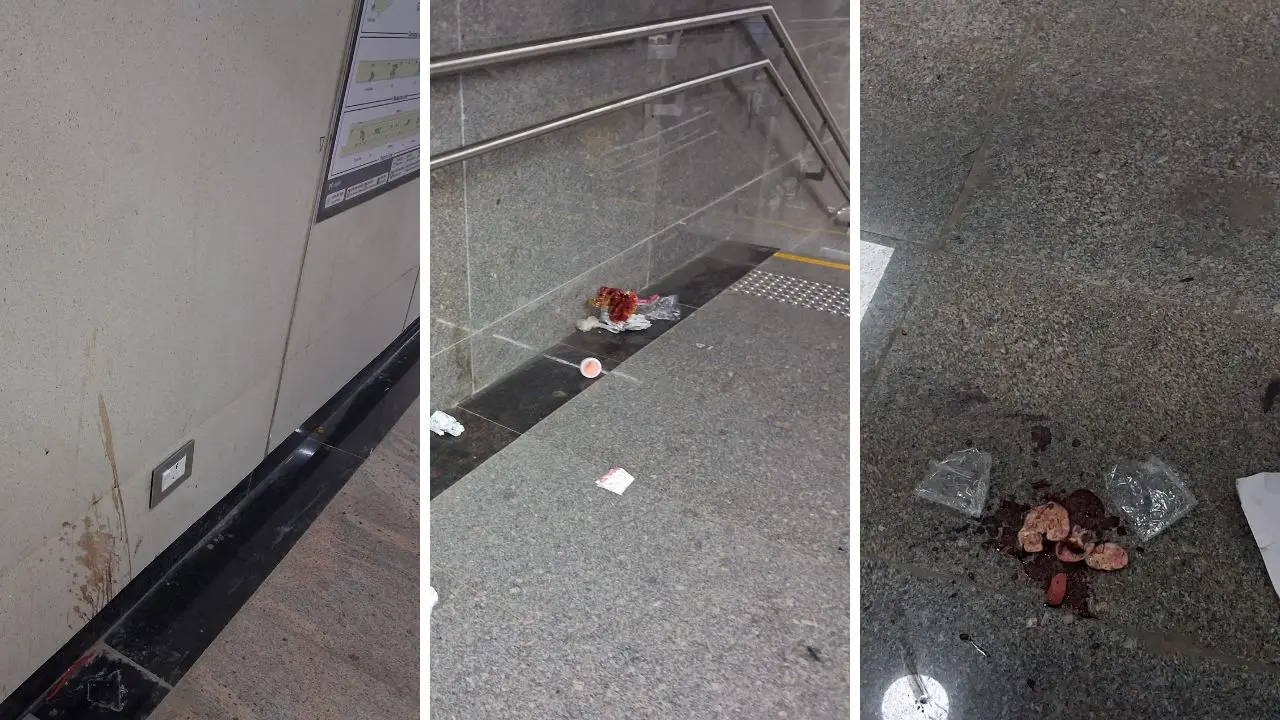The newly opened vigilance department office on the ground floor of the Chhatrapati Shivaji Maharaj Terminus (CSMT) has been inaugurated with a metal plaque bearing the name of the outgoing general manager, hammered right into the walls of the UNESCO World Heritage Site. His predecessor, too, had left behind a similar mark. A new toilet for staff has also been built in a corner of the building, all significant alterations causing permanent damage to the heritage façade of the building.
Irreversible changes
Also, while setting up the office for the vigilance department on the ground floor, irreversible changes have also been made to the iconic building, with the old and historic mezzanine floor and the spiral staircase demolished and removed, and the entire chamber upgraded with central air-conditioning.
One of the plaques recently installed at Chhatrapati Shivaji Maharaj Terminus. Pics/Rajendra B Aklekar
Old timers at CSMT said that while breaking the old office, many original assets like spiral staircases, a mechanical pulley system, were brutally cut with gas cutters and discarded.
Another outgoing GM had hammered the plaque of his name next to Frederick William Stevens’s original plaque. Experts point out that such plaques drilled into stone not only scar the historic fabric but also violate international conservation norms. They added that heritage conservation does not forbid commemoration, but it prescribes reversible, non-invasive methods, unlike these.
A toilet recently built for staff, which was originally a ticket printing office
CSMT, formerly Victoria Terminus, designed by Stevens in 1888, is one of Mumbai’s most iconic heritage landmarks. It is protected under UNESCO guidelines and the Archaeological Survey of India (ASI), which mandate that no alterations or structural changes should compromise the authenticity and integrity of the building. The UNESCO inclusion comes with strict guidelines: no changes or additions are permitted that compromise its authenticity, integrity, and historical fabric.
As per the original pencil drawings by Stevens accessed by this journalist, the offices now renovated and occupied by the vigilance department were originally designed as ticket printing offices and general printing offices with the cash office next door, which also explains the presence of the underground storeroom (earlier highlighted by mid-day) there. The original ticket printing office has now been converted into a toilet, and all other offices have been merged into the vigilance department office.
R Venkatesh, city historian; Aadil Desai, heritage evangelist
Insensitive interventions
According to UNESCO’s Operational Guidelines for the Implementation of the World Heritage Convention, sites must be maintained in a manner that respects “the original materials, workmanship, and design.” Additions that “diminish the character or heritage value” of the structure are explicitly discouraged.
The ASI, custodian of India’s World Heritage Sites, has in the past too flagged similar insensitive interventions — from makeshift offices to random signage — but plaques bearing the names of outgoing GMs appear to be an unspoken tradition.
Heritage lovers said the vigilance department may be watching over others, but there seems to be no one watching over CSMT itself, raising alarm over insensitive interventions inside CSMT. From makeshift offices to random signage, the building has often been subjected to treatment unworthy of its UNESCO tag. Many officers have also structurally modified their chambers randomly.
Questionable legacy
A conservation architect, requesting anonymity, stated, “Every general manager seems to want to leave a legacy on the walls. If this practice continues, the building will soon resemble a patchwork of plaques rather than the masterpiece it is. It is outright insensitive to the heritage fabric.”
A former railway official said, “Such interventions may seem small, but over decades, they weaken the structure and erode its authenticity. A world heritage site is not private property to be used as a canvas for individual names.”
A city historian stated that better alternatives exist. “Movable honour boards, standalone panels, or digital records could preserve the memory of officials without damaging the building. There needs to be a permanent policy that recognises contributions without hammering into history,” the expert said.
“Plaques hammered into 19th-century stonework are a textbook violation. These walls were never meant to be defaced with the names of officials. Over time, such acts accumulate damage and erode both material and meaning,” said a city-based conservation architect.
Another conservation architect stated, “It is a failure on three counts. It is a direct assault on authenticity and integrity. These walls were not built to host vanity plaques of officials. Over decades, such acts accumulate and disfigure the building permanently.”
A former ASI official revealed that India had already been cautioned by UNESCO about altering or damaging heritage properties. “CSMT is no different. Repeated violations here could invite international censure, even a review of its World Heritage status,” warned the official.
‘Punish those responsible’
“All those responsible for the permanent damage they create when doing such work, especially on UNESCO`s World Heritage Site structures, should be made accountable and punished so that such acts are not repeated ever again. I remember some years ago when the Central Railways had pasted a printed paper poster asking people not to litter around the structure right on the stone walls of the CSMT building at the local train entrance porch. What an irony that they themselves deface the monumental heritage building in such a manner!” Aadil Desai, heritage evangelist and member of the Bombay Local History Society, said.
City historian R Venkatesh said, “New plaques, markers, or boards can be surely added to mark present achievements, in newly built or refurbished areas of old buildings; but without actually hitting nails or screws or scraping/modifying old original walls … which are part of historic grade I heritage to be preserved in pristine condition, especially given their original absolutely smooth finish. Railways have efficiently restored and respectfully maintained their heritage properties well in the past, and should continue taking good care of them without any physical damage or tampering with the visual markers of contemporary historical context. It needs a lot of awareness and sensitivity. New histories are surely to be marked, recorded and celebrated, but with care and sensitivity by not damaging any of the old relics.”
UNESCO guidelines
Paragraph 82: Sites must retain “authenticity in form and design, materials and substance.”
Paragraph 88: Any intervention that compromises these values “will impact the outstanding universal value.”
Paragraph 119: Management systems should ensure that “physical interventions are minimal and reversible.”
Earlier warnings by UNESCO
UNESCO has been monitoring its various sites and repeatedly flagged insensitive interventions at Indian heritage sites:
In 2002, it expressed concern over “inappropriate additions” at the Sun Temple, Konark
In 2013, the committee warned against uncontrolled construction near the Ajanta-Ellora Caves
In 2019, during the review of Jaipur’s inscription, the committee reminded India that any changes “affecting authenticity of material fabric” could lead to a review of the site’s World Heritage status











